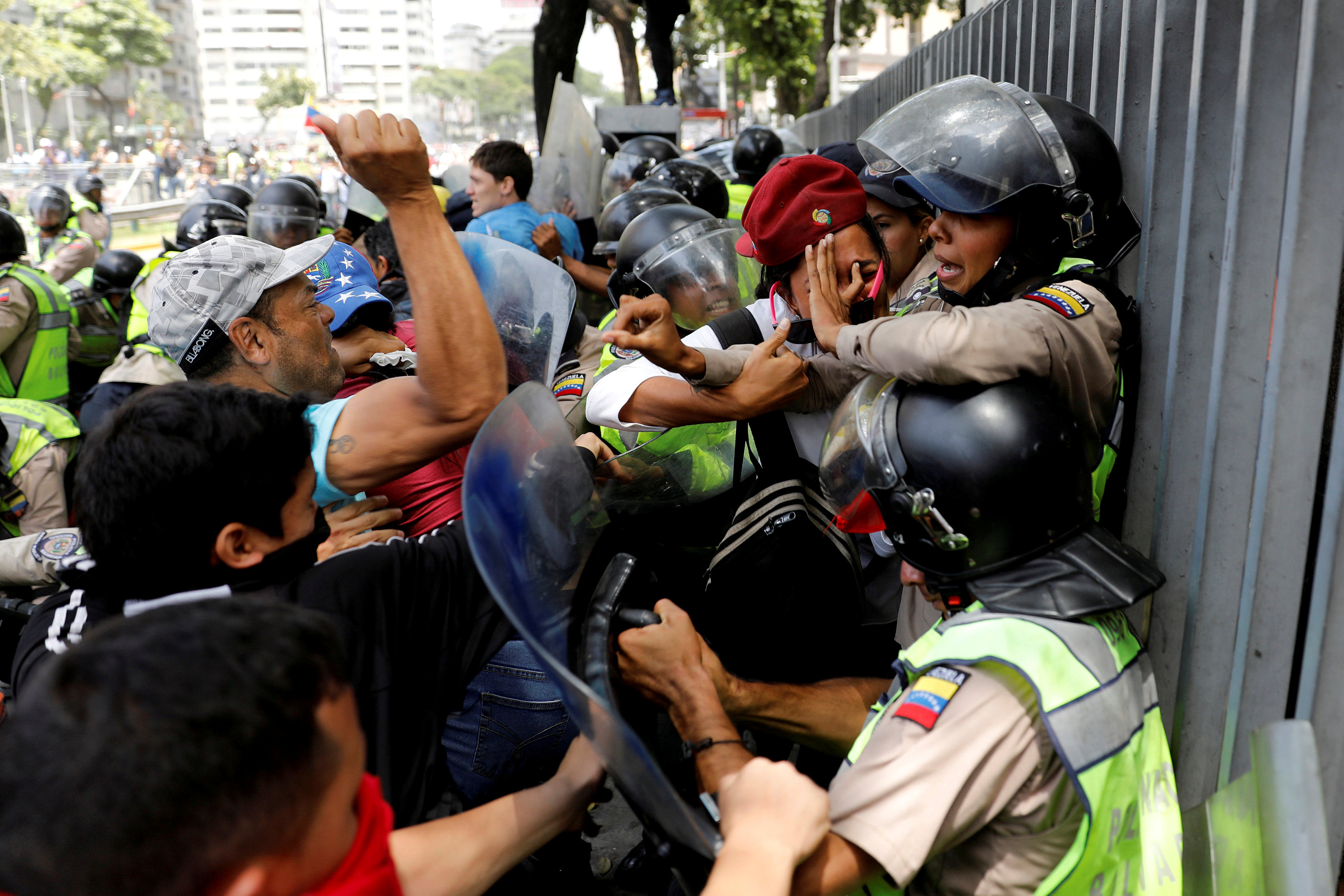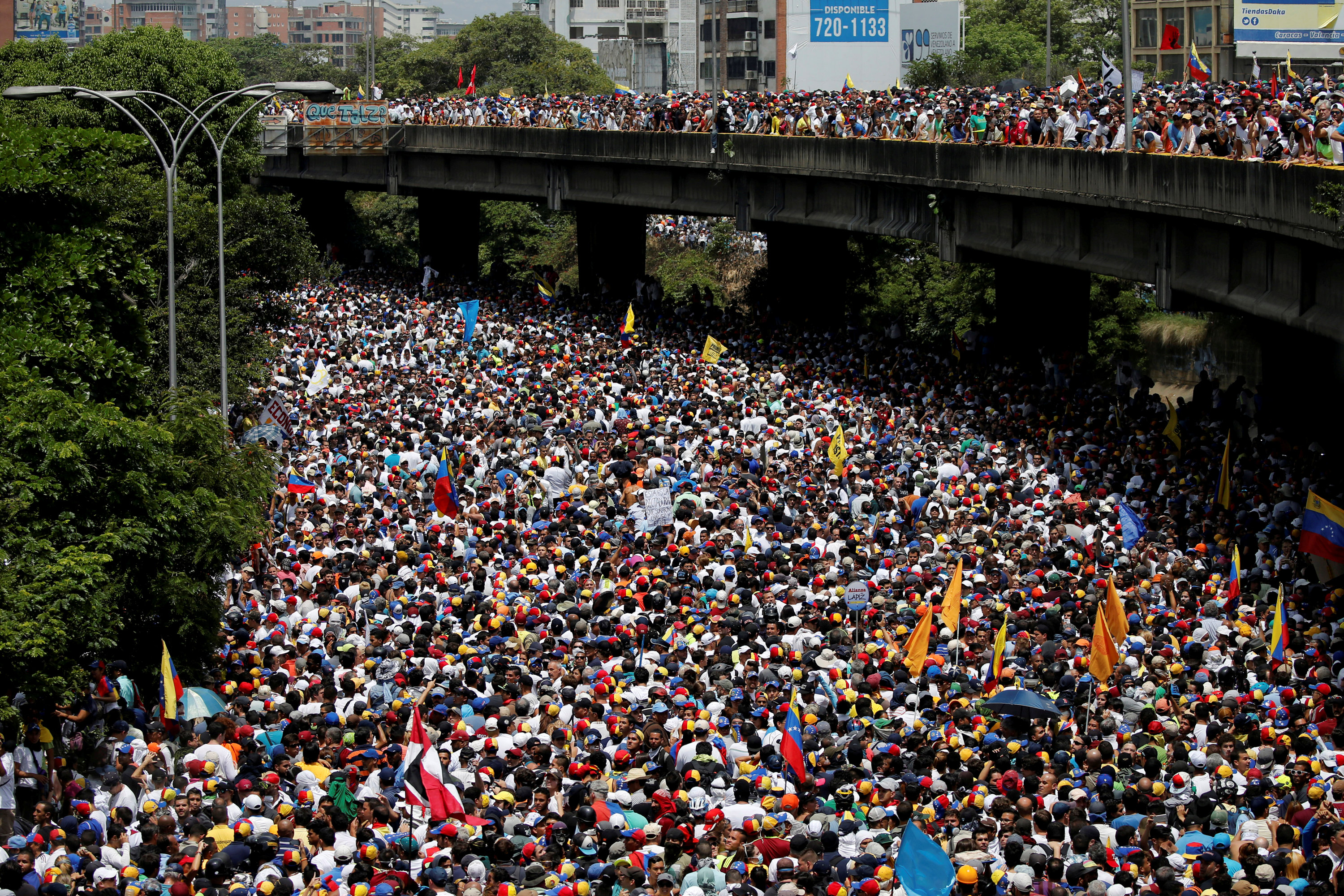
By Dan Williams and Nidal al-Mughrabi
JERUSALEM/GAZA (Reuters) – The Islamist group Hamas urged Palestinians on Thursday to abandon peace efforts and launch a new uprising against Israel in response to U.S. President Donald Trump’s recognition of Jerusalem as its capital.
The Israeli military said it was reinforcing troops in the occupied West Bank, deploying several new army battalions and putting other forces on standby, describing the measures as part of its “readiness for possible developments”.
Medics said at least 31 people were wounded by Israeli army gunfire when Palestinian protests erupted in the West Bank and Gaza Strip on Thursday. They said 11 were hit by live bullets and 20 by rubber bullets. One person was in a critical condition. Some protesters threw rocks at soldiers and others chanted: “Death to America! Death to the fool Trump!”.
Trump reversed decades of U.S. policy on Wednesday by recognizing Jerusalem as the capital of Israel, imperiling Middle East peace efforts and upsetting the Arab world and Western allies alike.
(For a graphic on possible Jerusalem U.S. Embassy sites, click http://tmsnrt.rs/2jIXIoq)
The status of Jerusalem – home to sites holy to the Muslim, Jewish and Christian religions – is one of the biggest obstacles to reaching a peace agreement between Israel and the Palestinians.
“We should call for and we should work on launching an intifada (Palestinian uprising) in the face of the Zionist enemy,” Hamas leader Ismail Haniyeh said in a speech in Gaza.
He urged Palestinians, Muslims and Arabs to hold rallies against the U.S decision on Friday, calling it a “day of rage”.
Naser Al-Qidwa, an aide to Western-backed Palestinian President Mahmoud Abbas and senior official in his Fatah party, urged Palestinians to stage protests but said they should be peaceful.
Asked on Israel Radio whether there might be another intifada, Intelligence Minister Israel Katz said: “In my estimate Abu Mazen (Abbas) will not wreck matters. It would not be helpful to him.”
Israel considers Jerusalem its eternal and indivisible capital. Palestinians want the capital of an independent state of theirs to be in the city’s eastern sector, which Israel captured in the 1967 Middle East war and annexed in a move never recognized internationally.
EMBASSY MOVE
Trump announced his administration would begin a process of moving the U.S. Embassy in Tel Aviv to Jerusalem, a step expected to take years, a move his predecessors opted not to take to avoid inflaming tensions.
Israeli Prime Minister Benjamin Netanyahu, who hailed Trump’s announcement as a “historic landmark”, said many countries would follow the U.S. move and contacts were underway. He did not name the countries he was referring to.
“President Trump has immortalized himself in the chronicles of our capital. His name will now be held aloft, alongside other names connected to the glorious history of Jerusalem and of our people,” he said in a speech at Israel’s Foreign Ministry.
Other close Western allies of Washington, including France and Britain, have been critical of Trump’s move. Pope Francis has called for Jerusalem’s status quo to be respected, while China and Russia have also expressed concern.
The EU’s foreign policy chief, Federica Mogherini, said: “The European Union has a clear and united position. We believe the only realistic solution to the conflict between Israel and Palestine is based on two states and with Jerusalem as the capital of both.”
The United Nations Security Council is likely to meet on Friday to discuss the U.S. decision, diplomats said.
Trump’s decision has raised doubts about his administration’s ability to follow through on a peace effort that his son-in-law and senior adviser, Jared Kushner, has led for months aimed at reviving long-stalled negotiations.
Haniyeh called on Abbas to withdraw from peacemaking with Israel and on Arabs to boycott the Trump administration. Abbas said on Wednesday the United States had abdicated its role as a mediator in peace efforts.
“We have given instruction to all Hamas members and to all its wings to be fully ready for any new instructions or orders that may be given to confront this strategic danger that threatens Jerusalem and threatens Palestine,” Haniyeh said.
“United Jerusalem is Arab and Muslim, and it is the capital of the state of Palestine, all of Palestine,” he said, referring to territory including Israel as well as the Hamas-controlled Gaza Strip and the occupied West Bank.
EXPECTING BACKLASH
Israel and the United States consider Hamas, which has fought three wars with Israel since 2007, a terrorist organization. Hamas does not recognize Israel’s right to exist and its suicide bombings helped spearhead the last intifada, from 2000 to 2005.
Fearing recrimination could disrupt reconciliation efforts between Hamas and Fatah, Palestinian Prime Minister Rami Al-Hamdallah and other Fatah delegates arrived in Gaza on Thursday to meet Hamas.
The international community does not recognize Israeli sovereignty over the whole of Jerusalem, believing its status should be resolved in negotiations. No other country has its embassy in Jerusalem.
Trump’s decision fulfils a campaign promise and will please Republican conservatives and evangelicals who make up a sizeable portion of his domestic support.
He said his move was not intended to tip the scale in favor of Israel and that any deal involving the future of Jerusalem would have to be negotiated by the parties, but the move was seen almost uniformly in Arab capitals as a sharp tilt toward Israel.
The United States is asking Israel to temper its response to the announcement because Washington expects a backlash and is weighing the potential threat to U.S. facilities and people, according to a State Department document seen by Reuters.
In Lebanon, Hezbollah lawmakers said the U.S. recognition of Jerusalem as Israel’s capital constituted aggression against Palestinians and resistance was the only way to recover lost rights. Hezbollah and Israel fought a war in 2006.
Protests broke out in areas of Jordan’s capital, Amman, inhabited by Palestinian refugees, and several hundred protesters gathered outside the U.S. consulate in Istanbul on Wednesday after Trump’s announcement.
In Pakistan’s capital Islamabad, about 50 members of the Islamist movement Jamaat-ud-Dawa staged a protest on Thursday to denounce the U.S. decision. A few dozen people from a trade organization joined the rally.
Taliban insurgents in Afghanistan said the United States was “exposing its colonial ambition in Muslim territory”.
Palestinians switched off Christmas lights on trees outside Bethlehem’s Church of the Nativity, where Christians believe Jesus was born, and in Ramallah, next to the burial site of former Palestinian leader Yasser Arafat, in protest.
(Additional reporting by Hamid Shalizi in Kabul, Kay Johnson in Islamabad, Ellen Francis in Beirut, Ori Lewis in Jerusalem; Editing by Nick Tattersall and Janet Lawrence)












